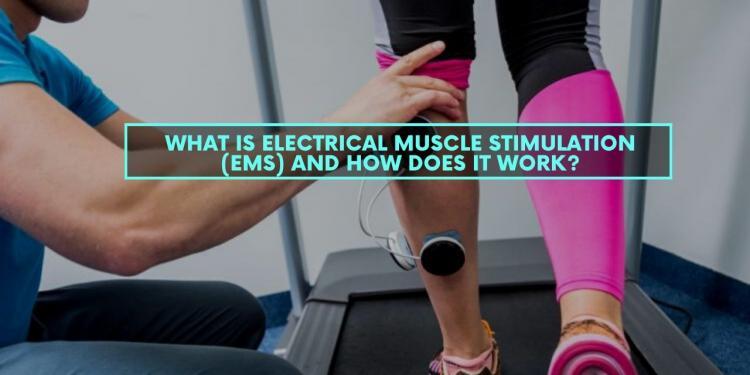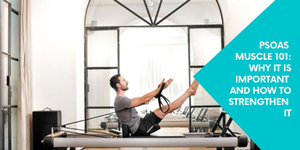Whether you’re an amateur or pro fighter, Electrical Muscle Stimulation, or EMS can be a valuable part of your training and recovery. The therapy offers an inexpensive and drug-free way to be your best. Many champion athletes swear by EMS as being a huge factor in their success. And advocates include the fastest man in the world, Usain Bolt.
In this guide, we detail what EMS and how it works. We also cover the benefits of EMS, who can use it, and how EMS can help athletes.
What Is Electrical Muscle Stimulation?
Electrical Muscle Stimulation, or EMS, causes muscles to contract, by using electrical impulses which helps your muscles become stronger.
The electrical impulses can make your muscles contract more than during a regular workout. EMS therapy has been proven to promote strength, explosiveness, and fitness performance. They can also be useful in treating many medical conditions and can help your recovery after exercise or injury.
EMS can provide pain relief in addition to healing, which is why it is often confused with Transcutaneous Electrical Nerve Stimulation or TENS therapy.

How Does EMS Work?
Electrical Muscular Stimulation works by placing electrodes at the site of the injury. As the electrical current output is gradually increased you’ll feel a tingling sensation. The sensation is increased until it feels strong but comfortable. As the current increases, the body adapts, so it’s necessary to increase the electrical output every few minutes.
A typical treatment lasts from 10 to 20 minutes, depending on the aim of the therapy. If the treatment is for improving muscular strength or function, you might be required to contract your muscles during the session. EMS stimulates oxygenated blood to the site which strengthens muscles, decreases healing time, and provides pain relief.
What Are the Benefits of EMS?
EMS is a therapy trusted by health professionals as an effective and better alternative to taking medication that has side effects. It’s also proven to help athletes in numerous ways. EMS has several benefits and uses for healthy people and those with injuries and medical conditions: EMS can:
- Strengthen muscles
- Reduce muscle soreness
- Improve muscle performance
- Increase muscle growth
- Enhance rehabilitation of muscles
- Prevent and reverse muscle atrophy (loss of muscle mass/tissue)
- Increase range of motion for tense muscles or tendons
- Relax muscles
- Tone muscles
- Improve joint pain and swelling
- Reduce stress and discomfort
- Increase local blood circulation
How Can EMS Help Athletes?
EMS can help athletes in several ways. It can help to loosen muscles before training to prevent injuries. EMS is a major factor in reducing recovery times after exercise. And they can also be a useful drug-free treatment for sports injuries.
Many studies have proven the efficacy of EMS in improving strength and jumping ability as a stand-alone treatment. Many elite athletes integrated into your workout routine. EMS improves sports performance by activating specific muscle fibers, forcing them to contract. Even top athletes only activate approximately 35% of their muscle fibers.
However, EMS pulses through the central nervous system activating muscle fibers at the motor neuron level. Through EMS it’s possible to activate up to 100% of the muscle fibers. Following EMS, the next time the brain sends a signal for that muscle to contract, due to muscle memory, more muscle fibers will contract.
Research has also shown that EMS also improves muscle perfusion. The increased blood flow to muscles can also improve your athletic performance.
Recovery
One way that EMS is highly effective in improving athletic performance is decreasing your recovery time. As a martial artist, my workouts are particularly strenous and I no longer can recover as fast naturally as I did in my 20s. In come recovery tools such as EMS.
Delayed onset muscle soreness or DOMS often occurs a day or two after a heavy training session. You’re desperate to get back at it but your muscles refuse. It’s been proven that EMS decreases recovery time and can, therefore, help you train harder. In a study conducted by the University of Nevada, the effectiveness of EMS was compared to both passive and active recovery. EMS was found to produce quicker recovery times than passive recovery and to be as effective as active recovery.
However, EMS has the benefit of reducing the energy expenditure involved with active recovery when you are fatigued or sore. Being able to get back to the gym quicker and train again is a huge factor in becoming the best at your chosen sport.
EMS recovery has been tested extensively in various groups of athletes and every time, it has been proven to be a highly effective tool in recovery times. Studies have been carried out with gymnasts, swimmers, soccer players, and baseball players.
Following EMS therapy for recovery, gymnasts could jump higher and had stronger muscles. Soccer players showed significant improvements in quadricep strength and ball speed. And a reduction in blood lactate improved the pitching speed of baseball players.
Swimmers are often exhausted after high-intensity sprints and also have elevated blood lactate. Active recovery and continuing to swim is not always a desirable choice. EMS therapy was able to reduce blood lactate while swimmers rested. The authors of the study, therefore, proposed EMS as an alternative recovery method.
Sports Injuries
Athletes and, in particular, elite sports stars push their bodies to the max. It’s the nature of the beast that many careers are blighted or ended by sports injuries. Since sports injuries are typically muscular injuries, EMS can be an excellent treatment option.
Common injuries include strains, sprains, fractures, tears and overuse injuries.
To treat these injuries with EMS, the generic advice is to place one pad at the top of the muscle. Then position a second pad one-third of the way along the length of the muscle you wish to strengthen. EMS uses sine wave stimulators to contract or spasm muscles. This results in increased blood flow which carries nutrients and oxygen in, and waste products out, which enhances healing and reduces pain.




